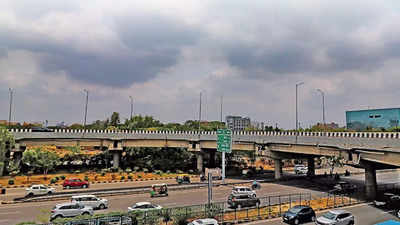- News
- City News
- gurgaon News
- Haryana records driest June in 5 years
Trending
Haryana records driest June in 5 years
Haryana faced driest June in 5 years with only 29.3mm rainfall, 46% below normal. El Nino worsened conditions, but IMD predicts neutral monsoon season. Concerns raised for critical crops like paddy, cotton. Water scarcity may impact irrigation demands. Varying rainfall patterns observed across districts, with some experiencing 90% below normal levels.

On the other end of the scale was June 2023, which witnessed multiple spells of pre-monsoon showers, leaving the state with surplus rainfall of 80.7mm. The last time that the state recorded deficit rain in June was in 2022 (36mm). Precipitation in June 2020 and 2021 was nearly ‘normal’.

An IMD scientist said that the El Nino weather phenomenon played a key role in making this summer particularly harsh and parched.
“El Nino is a climate pattern that is often linked with above-average high surface temperatures in the Pacific. It caused less than normal rainfall in South Asia in August 2023 and in January this year. But the good news is that El Nino is expected to wane after June, and IMD has predicted a neutral monsoon season without El Nino or La Nina influences,” he said.
Experts said on Monday that below-normal rainfall raises concerns about monsoon showers, which are critical for farmers growing summer crops such as paddy, cotton and sugarcane.
“A decrease in rainfall during this crucial period may result in diminished crop yields, posing a threat to food security and farmer livelihoods. Further, water scarcity could escalate irrigation demands, adding additional strain to an already vulnerable sector. Proactive measures such as water conservation strategies and crop diversification will be essential to mitigate the potential impact of this weather phenomenon on Haryana’s agricultural productivity,” said Anjal Prakash, one of the lead authors of the latest Intergovernmental Panel on Climate Change (IPCC) report.
Others also pointed out that weather patterns were becoming increasingly erratic. June 2023 saw excess rainfall, and this year, the month recorded deficient showers.
“Climate change influences precipitation patterns in complex ways. A shift in seasonality is one such disruption, wherein the timing and distribution of precipitation during a year are altered. Under a changing climate, an increase in the frequency and magnitude of extreme weather events, such as heavy rainfall, cyclones, and droughts, is observed. This is likely to worsen in the coming decades, with adverse implications for climate-sensitive sectors such as agriculture,” said Dr Indu K Murthy, sector head for climate, environment and sustainability at Center for Study of Science, Technology and Policy (CSTEP).
Data also showed that rainfall patterns across districts varied. In Ambala, Chandigarh and Panchkula, showers in June this year were 90% below the normal level.
Only Nuh, Gurgaon, Faridabad and Panipat recorded excess rainfall, and that too, because of a sudden deluge of showers on June 28.
End of Article
FOLLOW US ON SOCIAL MEDIA










